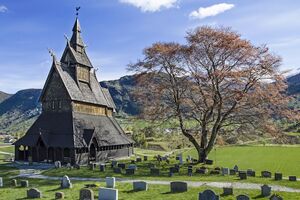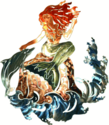Disitru: Difference between revisions
No edit summary |
|||
| Line 87: | Line 87: | ||
===Ditanery=== | ===Ditanery=== | ||
Ditantist Temples perpetuated the belief that Disitruar were carriers of physical and spiritual diseases. They were often forced to live in segregated communities and, if someone was discovered living in the wrong place or converted, their homes were burned to prevent contamination. | Ditantist Temples perpetuated the belief that Disitruar were carriers of physical and spiritual diseases. They were often forced to live in segregated communities and, if someone was discovered living in the wrong place or converted, their homes were burned to prevent contamination. | ||
[[Category:Religion in Gaia]] | |||
Revision as of 03:20, 19 February 2020
 | |
 | |
| Regions with significant populations | |
|---|---|
| 18,231,116 | |
| 6,852,630 | |
| 2,144,627 | |
| Languages | |
| Old Hallic (liturgical) Tuske, Crethian, Svaldish, Veranish | |
Dísitrú is an Tyric henotheistic and monolatrist religion based on the traditional beliefs and practices of the Hallanic peoples
Etymology and meaning
Beliefs
Concept of God
Dísitrú has a complex system of godhood, with it being considered monotheistic, polytheistic, pandeismic and monismic, among others. Its concept of God and godhood is variant upon the tradition followed. Followers of Dísitrú often refer to it as henotheistic (i.e., involving devotion to a single god while accepting the existence of others).
"When hail we?
Who will here answer it?
Whence were we made?
Whence was this creation?
The gods came afterwards, with the new light
Who then knows whence the dawn has arisen?"
A similar concept of divinity is shared between all traditions. It is held that the gods (tívar) came into being shortly after the creation of the universe. There exists no singular creation myth and the reason for creation and the existence of a creator is disputed among traditions. The gods are held as possessing the divine spark, though they are not omniscient, omnipotent or held to be wholly benevolent.
In the Sennleið tradition the Tívamál, the Time of Gods, has long since passed. Followers of this tradition believe that the event known as Ragnarök saw the deaths of many gods, with many others ascending to Valhöll. Týr became the Æztrhás, the supreme god charged with fulfilling all the duties expected of the gods. The Fallatýs (Descent of Týr) occurred when Týr descended to the Hel and bargained for the release of the slain gods, in return for taking charge of the underworld. His daughter, Damen (The Dame), took his place as the supreme god while the other gods ascended to Valhöll, and will remain the supreme god until Mánimál, when the world will be reborn as a paradise under the deity known as Vít.
Though for the most part considered a unified group, the gods are traditionally classified into three castes: the Æsir, the Vanir, and the Jötunn. The differences between the groups vary in the myths, with earlier stories tending to imagine them as having striking physical differences which later stories lack. In the modern day the Æsir are commonly associated with the sky, rulership, and war, the Vanir with the earth, economics, and fertility, and the Jötunn as primal beings of nature. Most scholars believe that the differences are a result of a societal imprint left by historical events, the Jötunn being an echo of the Paleo-Hallanics. The Æsir and Vanir are believed to be representative of the old Irya-Moelian castes, the Æsir representing the first and second caste: priests and warriors, and the Vanir representing the third caste: farmers and tradesmen.
Practices
Scripture
Law
Society
Marriage
Helgtband - Permanent marriage, family-oriented, only one allowed, religious, divorce difficult, children 'higher status' (archaic)
Handfesta - 'Temporary' marriage, contractual, polygamy allowed (with restrictions), semi-religious (depends on state), same-sex marriage depends on state, 'lower status' children (archaic)
Eskerhlaup - Modern term means cohabitation + common-law marriage, civil, older term also included concubinage, polgyamy allowed, legal protections depend on state, same-sex allowed, 'lowest status' children (archaic)
History
Demographics
Denominations
Culture
Holidays
Across all denominations, there a number of religious holidays in Dísitrú. The two most prominent of these are Aflinntide and Veislatide, which are celebrated in conjunction with the winter and summer solstices respectively. Aflinntide, also known as Yule, is a gift-giving holiday celebrated in December, which emphasises the values of family, friendship and sharing.
Common activities during Yule include the decoration of pine trees, the hanging of lights, gift-giving and the consumption of hearty foods. A gift-giver is present in some denominations, though the personal exchange of gifts is universal to all.
Conversely, Veislatide, also known as Midsummer, is celebrated in June, and is a holiday which focuses on self-improvement and the settling of quarrels. During Veislatide, harvest games and maypoles are common, while it is expected for the pious to set a goal for themselves to achieve before the next Midusmmer, and to settle any disputes they have with others.
Both Aflinntide and Veislatide have official recognition as public holidays in the Hallanic states.
Criticism, persecution, and apologetics
Ditanery
Ditantist Temples perpetuated the belief that Disitruar were carriers of physical and spiritual diseases. They were often forced to live in segregated communities and, if someone was discovered living in the wrong place or converted, their homes were burned to prevent contamination.




